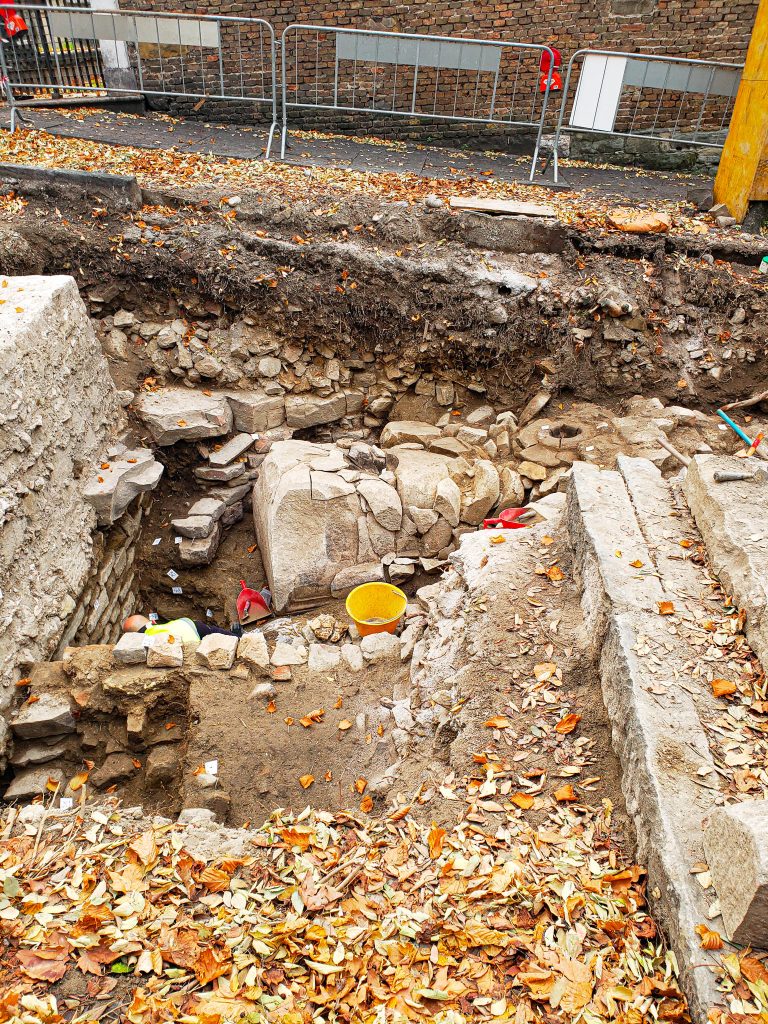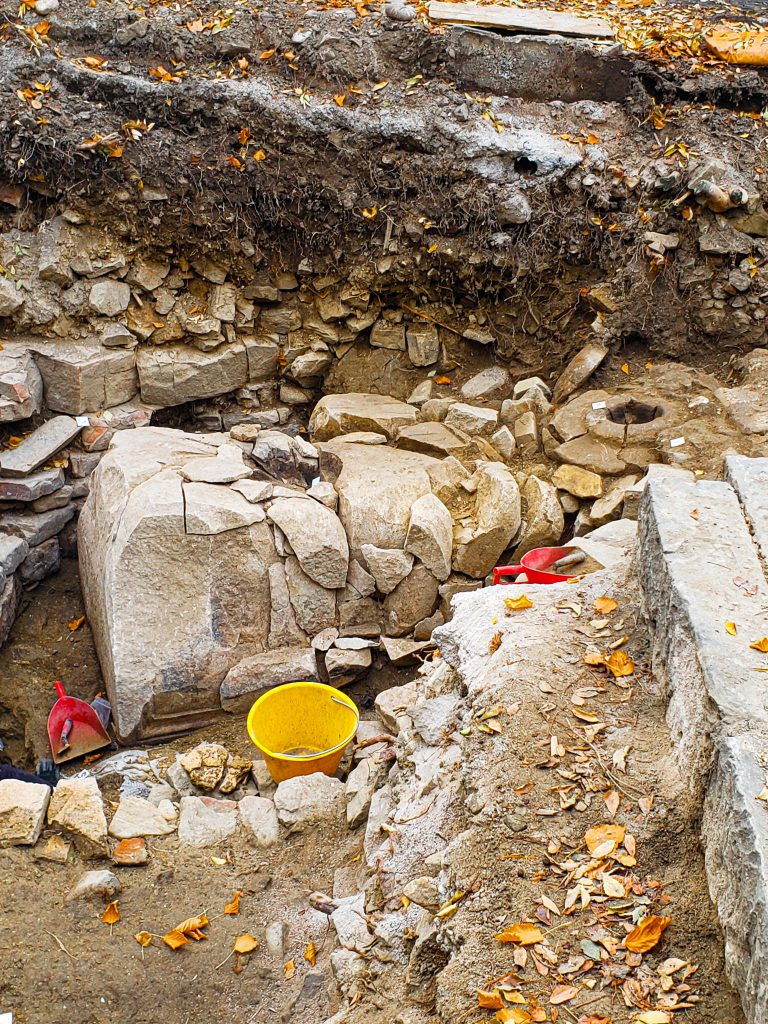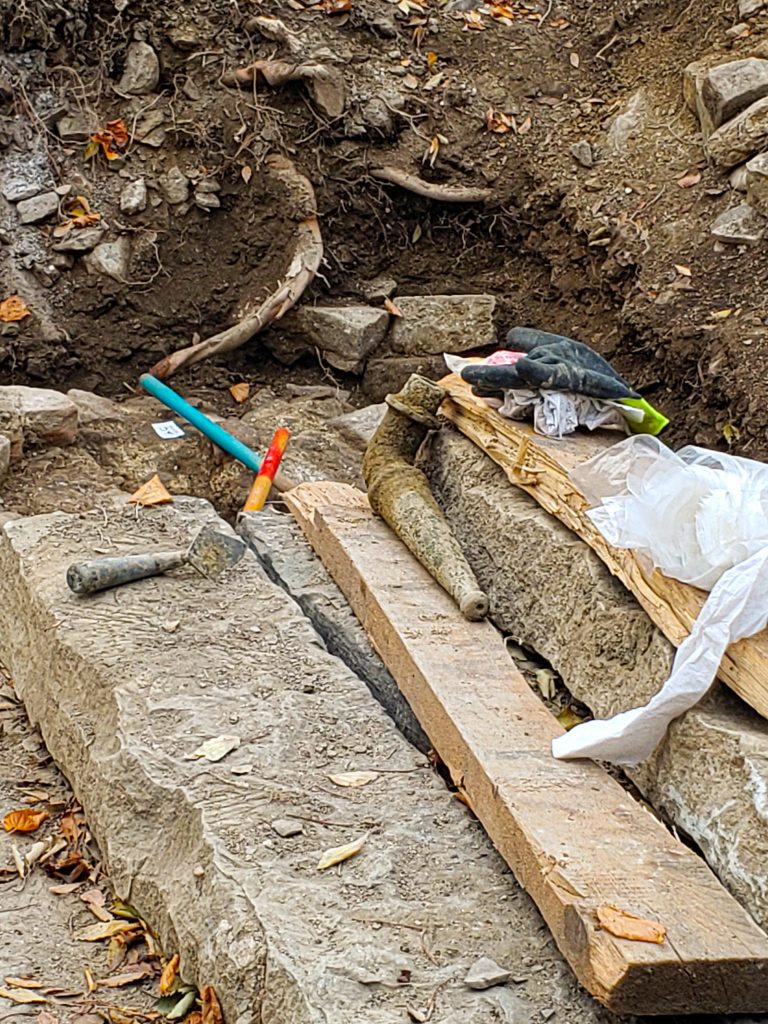by Ashley Caneva
I’ve picked up a funny habit since moving to Italy in 2019. Whenever I spot roadwork or construction being done, I can’t resist taking a closer look.
Coming from a nation that is younger than the Molo Audace, I often wonder to myself what fragments of history lie buried beneath my feet as I walk through Trieste about my daily business.
Surely, there is a lot left to discover – and if someone is already breaking ground, I figure it can’t hurt to have a look. After all, Herculaneum was accidentally discovered when someone tried to dig a well.

Today, a stroll down via della Cattedrale made every hopeful glance that has been met with a boring hole in the ground worth it. If you’ve walked by San Giusto Cathedral recently, you may have seen some work being done just outside the Winckelmann Museum and even spotted the remnant of a wall being uncovered.
I just happened to be walking by this morning while two archeologists were hard at work on expanding the dig. What’s more, they seemed to recognize my nerdy fangirling over the site and agreed to tell me all about their discoveries. The first item they showed me was a Roman bronze water pipe, which was surprisingly intact.

The large, light-grey wall remnant was likely built in the Middle Ages and may have been part of an entry way to San Giusto castle. Just a few feet farther downhill they uncovered something older – a late Roman or early Medieval oil press. You can clearly see two round holes in the stone where large vessels would have been placed. An abundance of ancient olive pits makes it quite clear where olives were crushed for oil.
If you look at the former oil press a bit closer, you’ll realize that the press itself was in fact a repurposing of a Roman monument – as evidenced by the beveling and inscription it still bears. This monument was probably erected somewhere on San Giusto Hill back in its Roman heyday, fell or was damaged, and was later used for a then state-of-the-art press. Another similar press recycled from a funerary monument is easily visible to passers-by, but tucked away in Citta Vechia at Via dei Capitelli 8, near the Taverna Dell’Olio. (Coincidence?)

This is a truly interesting dig as much of San Giusto Hill has been largely unexcavated through the years. The excavations in the early 1930’s were focused primarily on retrieving notable artifacts that now reside in the lapidariums. This find, however, may give us a better glimpse of the daily lives of those who loved this city ages before us and hopefully whet the community’s appetite for more new information about the ancient commonman’s “Tergeste.”






























Very nice article! Thanks for writing it.